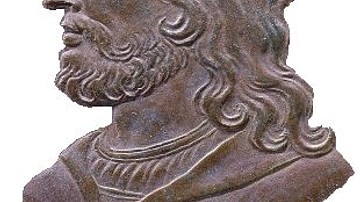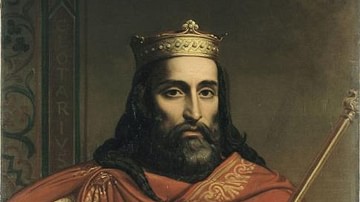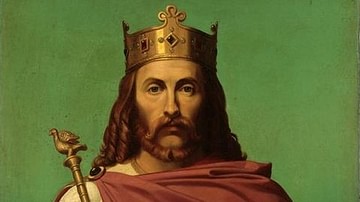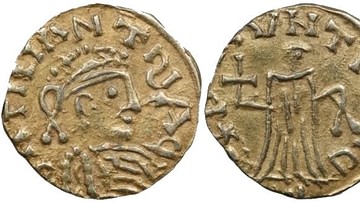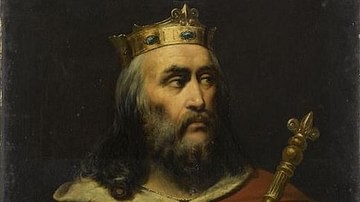The Merovingians were the ruling family of the Franks from roughly 481 CE, when Clovis I rose to power, until 751, when the last Merovingian king was overthrown and supplanted by the Carolingian Dynasty. They established the largest, most dominant realm in Western Europe following the fall of the Western Roman Empire, and are often considered the founders of France.
The word 'Merovingian' is derived from the family's founder, Merovech, a semi-mythical Frankish leader who was supposedly birthed by a sea beast known as the Quinotaur, and who went on to fight alongside the Romans against the Huns at the Battle of the Catalaunian Fields (451 CE). It was Merovech's grandson, Clovis, who would go on to unite the scattered Frankish kingdoms under a single crown, conquering most of Roman Gaul, and who would convert the Franks to Nicene Christianity (Catholicism). After Clovis' death, his kingdom was divided up amongst his four sons, fostering an atmosphere of envy and competition that would ultimately hasten the dynasty's downfall. Although Clovis' sons worked together to conquer neighboring lands and expand on their father's conquests, they simultaneously eyed one another's kingdoms, and wives, with jealousy; civil wars, plots, and assassinations became a common feature of Merovingian rule.
After generations of bloody civil war, one of Clovis' great-grandsons, King Chlothar II, eventually emerged as the victor. But his success came at a price, as he was forced to sacrifice much of his authority to his nobles in order to ensure their support. By the time Chlothar II's son, King Dagobert, died, the Frankish nobles had become so powerful as to render the Merovingian kings as little more than figureheads; for this reason, the last century of Merovingian rulers was referred to by the chronicler Einhard as "do-nothing kings". In 751 CE, the charade was finally done away with when the last Merovingian king was deposed by Pepin the Short, who ushered in the rule of the Carolingians.
In this collection are contained the most powerful rulers of the Merovingian era: from Childeric, whose treasure fascinated and inspired later French rulers like Napoleon; to Chilperic, whose Shakespearean love affair with a serving maid, Fredegund, led to murder and civil war of devastating proportions; to Brunhilda, the Visigothic-born queen whose proxy wars against her rival Queen Fredegund lasted decades; to Dagobert, who is best remembered by French school children as having worn his trousers inside out. These monarchs, whose realms grew to encompass much of modern-day France and Germany, defined the Early Middle Ages and helped set the stage for the accomplishments of Charlemagne.

